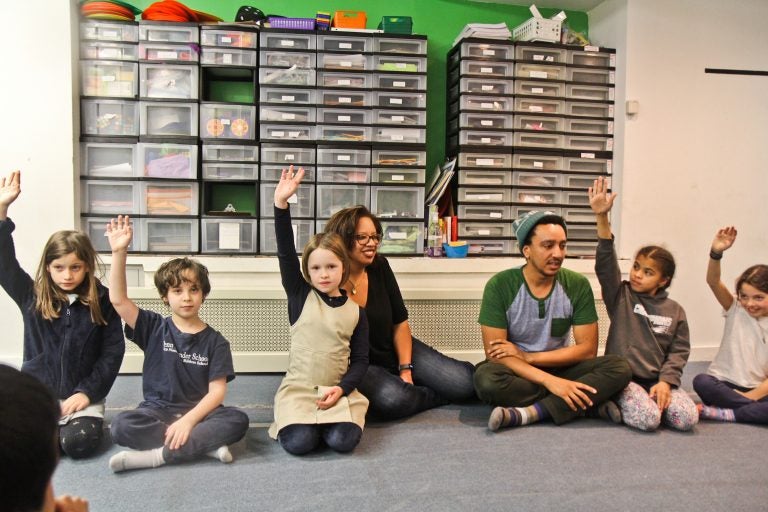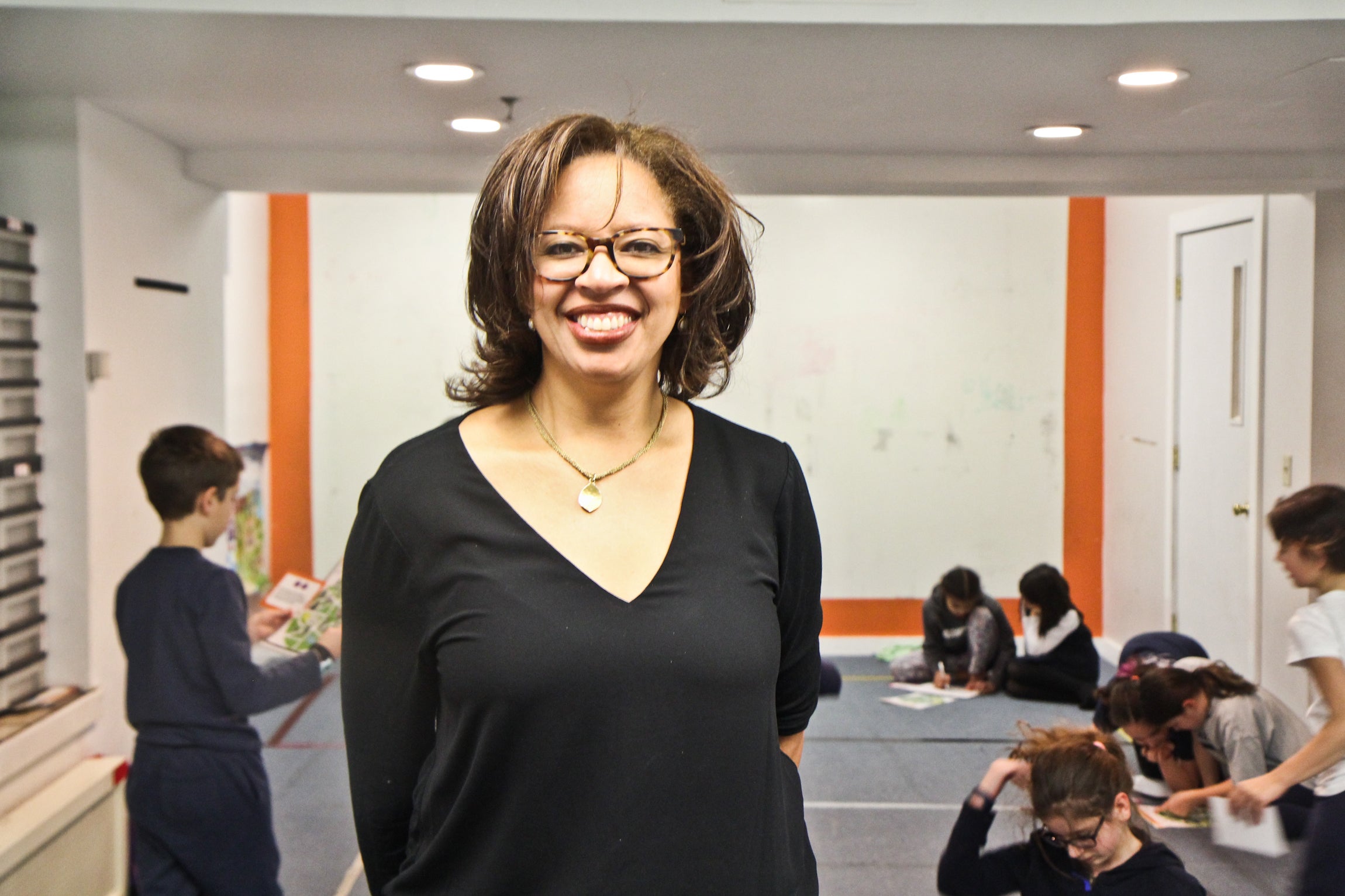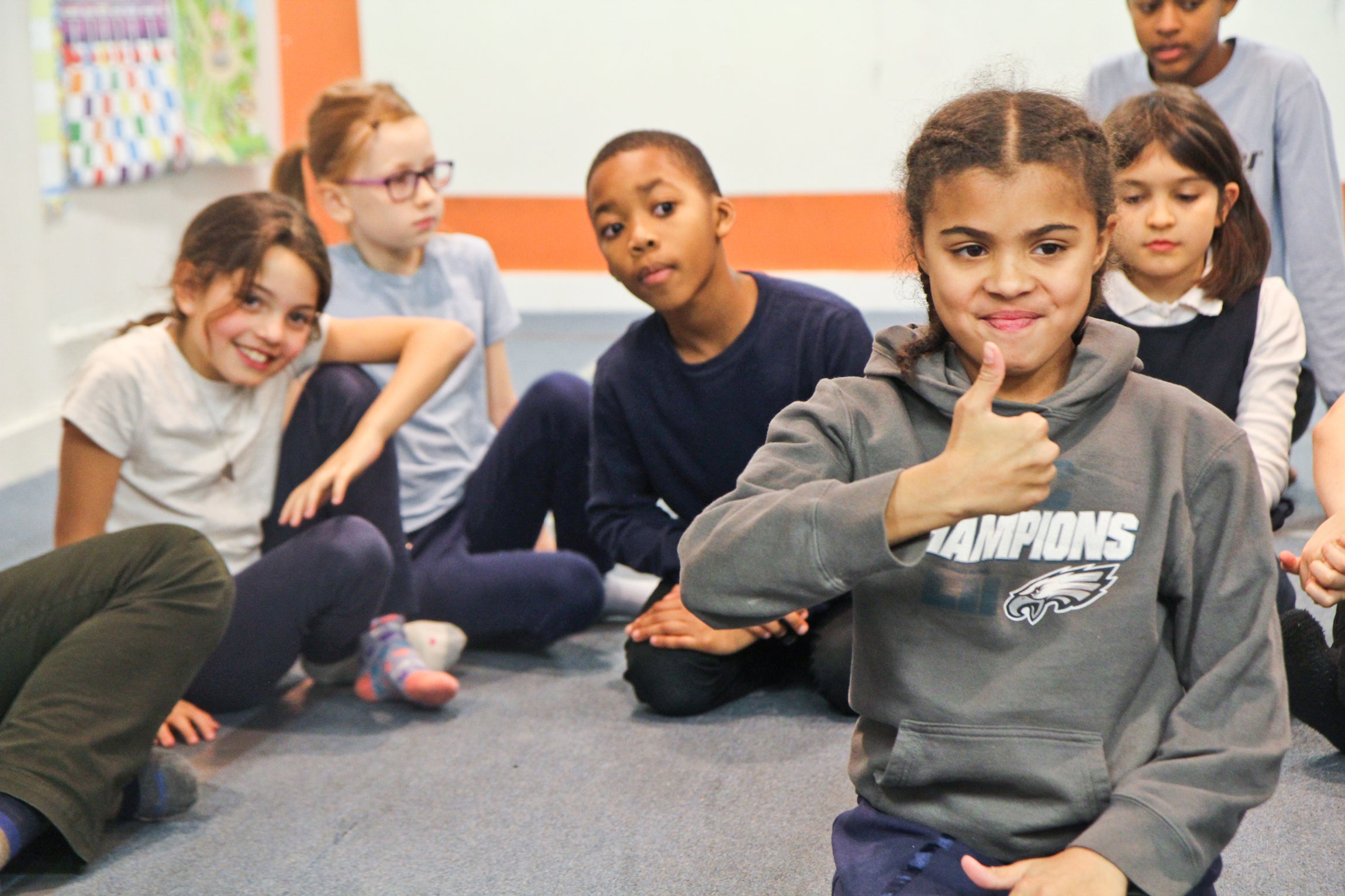What’s the best way to teach math?
For decades, people in the U.S. have worried about falling behind the rest of the world at math. Some teachers think they have answers.
Listen 08:47
Students at the Trapezium Math Club practice skip counting, an exercise which helps them learn multiplication. (Kimberly Paynter/WHYY)
A boy in Lafayette, Indiana, recently thought his struggle with math was an emergency. He called 911 and told the operator he’d had a bad day at school and had tons of homework.
The operator asked him what he was struggling with and helped him do an addition problem, ¾ + ¼. He thanked her, and then apologized for calling.
The police department tweeted out the call, and explained that while “they train for many emergency situations, homework help is not one they plan for.”
First responders probably aren’t the best people to call with a math crisis, but education researchers agree math is a national problem. It’s stressful, and students sometimes hate math for the rest of their lives.
People in the United States talk repeatedly about how the country lags behind the rest of the world in math. In the past couple of years, some teachers have wondered: What if there is something wrong with the way they teach math to students? We found two approaches to solving this problem.
Caroline Ebby teaches aspiring math teachers at the University of Pennsylvania. She said the issue is that, in the U.S. people learn math as a set of rules to follow.
For example, she asks the future math teachers in her classes to divide ½ by ⅓. Most people can get the answer by following the rules for division: flip the second fraction and then multiply to get 3⁄2 or 1½.
“We might say to them in class, ‘OK, we want you to explain why ½ divided by ⅓ is 1½. And they have no idea. All they know is this procedure that actually made no sense to them.”
Ebby and a lot of educators around the country say that’s the problem, so their solution is to make sure students understand how calculations work — and know what they’re doing when they divide ½ by ⅓. Even for math problems that seem simple, students have to explain their work — show they understand what the calculations mean, as well as get the right answer.
In a second-grade classroom at William M. Meredith Elementary, a public school in Philadelphia, around 30 students are doing the problem, 123 – 48.
Some did what most people learn in school: put 123 on top of 48, draw a horizontal line, and subtract.
But in this class, some students do it differently: They start from 48, add 2 to get 50, and then keep adding up to get to 100, 120, and then 123.
The idea is that subtracting two numbers means finding the distance between them, so counting up works just as well. Teacher Kate Severino said this strategy is simple enough that one kid was able to explain it to the whole class.
“Everybody in the room kind of stopped and was like, `Oh, that’s something that’s really cool,’ ” she said. “That was a huge shift for me because a lot of times as a math teacher, when you ask a kid how they solved a problem and they say, ‘Oh, I did it in my head,’ they have absolutely no idea how to explain that. They’re like, ‘Oh, the answer just popped into my head.’ But that never happens, we know that doesn’t happen, there’s always a process.”
She wants the kids to know how the strategies work, and have them pick whichever process works for them.
Angela McIver does not agree. She saw her daughter do this in elementary school, and got frustrated that her daughter had to explain so much just for a simple math problem
“They teach strategies for solving problems that are highly inefficient,” she said.
McIver used to be a middle school math teacher, but now she has a business running a math club. All this process is an unnecessary burden for kids in elementary school, she said.

“A lot of kids come into elementary school with … things that they know, like … 7 plus 4 is 11. But in the lower grades, a lot of time is spent deconstructing 7 plus 4, and kids have to write … explain how they know that … 7 plus 3 is 10 and then they add 1. So it undoes skills that we’re trying to build.”
If we make kids show their work for simple math problems, McIver said, it just bogs down their thought processes when they should getting fast and good at easy problems as a foundation for harder ones.
“A lot of content is handled in the lower grades … and kids don’t master any of it,” she said.
So she has a second fix for our national math crisis.
At the start of one session at her business, Trapezium Math Club, students sit in a circle on the floor, with one student in the middle. They do something called skip counting — counting up and then back down by multiples. It’s like memorizing and reading back the results of the times tables, but with a 30-second time limit. For example, skip counting by 6 would go something like 6, 12, 18 etc.
It’s like muscle memory for doing simple calculations very quickly.
For example, if you need 50 eggs for a huge bake sale, but the grocery store only has cartons of 6, someone good at skip counting could quickly get to 48, and then know quickly that you need 9 packs of 6 to get 50 eggs.

McIver said her approach is more than just counting fast. The fluency that comes from repetition and memorization creates a mental map for numbers, which will help when students move on to more difficult concepts such as fractions and algebra, she said.
And in this approach, she and her teachers try to make it fun. The kids learn math tricks and play games, and they are eager to do math.
So there are these two different ways of teaching math: one with a big emphasis on showing your work — demonstrating you understand concepts behind the calculations and answers; the other with an emphasis on speed and memorization.
Which approach children learn at school can vary a lot, depending on whether they go to public school or private school and where they live in the U.S. That makes it hard to do national assessments of which approaches are most widely used in schools. But experts say most children in the U.S. probably still learn by following the rigid procedures that generations of students learned before them.
WHYY is your source for fact-based, in-depth journalism and information. As a nonprofit organization, we rely on financial support from readers like you. Please give today.







